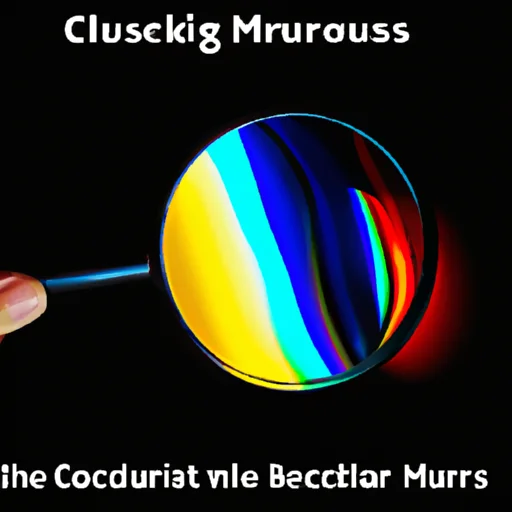In our pursuit of understanding the world of colors, we often wonder about the characteristics of one particular hue: black. Although it is notorious for absorbing almost all the light that falls upon it, have you ever wondered if there’s a color that black simply cannot absorb? Join us as we explore the enigmatic nature of black and discover if any hue manages to escape its clutches.
Table of Contents
What Color Does Black Not Absorb

Introduction
In the world of color, black is often regarded as the absence of all color. It is a shade that is commonly associated with darkness, mystery, and elegance. While we may perceive black as a color that absorbs all wavelengths of light, there are interesting nuances to consider. In this article, we will delve into the topic of what color black does not absorb, exploring the science behind the absorption of light, the nature of black, the colors absorbed and not absorbed by black, factors influencing color absorption, and the implications of black’s lack of absorption in various fields.
Explanation of Absorption of Light
Before we can understand what colors black does not absorb, we must first grasp the fundamentals of light and color. Light is composed of different wavelengths that our eyes perceive as various colors. When light interacts with objects, it can be absorbed, reflected, or transmitted. The colors we perceive are the result of the light that is reflected off an object and reaches our eyes. The process of absorption plays a crucial role in our perception of color, as it determines which wavelengths of light are absorbed by an object and which are reflected or transmitted.
The Nature of Black
Black, often considered the absence of light, is an intriguing color in itself. It is the darkest hue on the visible spectrum, and its defining characteristic is its ability to absorb all wavelengths of light. Unlike other colors that may reflect certain wavelengths, black absorbs nearly all incident light, resulting in its characteristic darkness. Black can be created by combining pigments that absorb a wide range of colors or by using materials with properties that prevent light from being reflected back to our eyes.
Colors Absorbed by Black
The question of what colors black does not absorb seems paradoxical. In reality, black absorbs all colors of light, including red, orange, yellow, green, blue, indigo, and violet. When white light, which contains all the colors, encounters a black surface, all the colors are absorbed, leaving us with the perception of black. This absorption occurs due to the material properties of the object, which determine how it interacts with light. While black may appear visually devoid of color, it is actually absorbing the entire visible spectrum.

Colors Not Absorbed by Black
Given that black absorbs all colors, it does not leave any specific colors unabsorbed. Instead, black is the absence of reflected light. It is devoid of any color that our eyes can perceive. This absence of color is what gives black its unique quality and makes it fundamental in the realm of visual perception. While other colors reflect and transmit specific wavelengths, black’s ability to absorb all colors allows it to stand in stark contrast to the rest of the visible spectrum.
Factors Affecting the Absorption of Colors
Various factors can influence the absorption of colors by black objects. One significant factor is the material properties of the object. Different materials have varying absorption characteristics, which stem from their molecular structure and composition. Additionally, the surface texture of an object can impact color absorption. Rough surfaces may scatter and reflect light in different ways than smooth surfaces, affecting the overall absorption of colors. Moreover, environmental factors such as lighting conditions and the presence of other objects can also play a role in color absorption by black surfaces.

Applications of Black’s Lack of Absorption
Black’s ability to absorb all colors has found applications in numerous industries and fields. In fashion and design, black is highly versatile and is commonly used to create stylish and sophisticated looks. Black clothing and accessories are renowned for their slimming effect and timeless aesthetic. In the automotive industry, black is a popular color choice for cars, as it exudes a sense of elegance and luxury. Additionally, black is utilized in technology to enhance the contrast and readability of displays, improving user experience.
Artistic and Design Considerations
In the realm of visual arts, black holds significant artistic and design considerations. Psychologically, black is often associated with feelings of power, mystery, and formality, making it a powerful tool for evoking emotions in artwork. Artists frequently employ black to create contrasts and emphasize other colors within their compositions. The absence of reflected light provided by black can enhance the brilliance and saturation of adjacent colors, allowing them to stand out more prominently. Design principles involving black’s lack of absorption encompass a wide range of applications, from branding and packaging to interior design and architecture.

Scientific and Technological Implications
Beyond art and design, the understanding of black’s lack of absorption has significant scientific and technological implications. In astronomy, for example, black is integral to studying the cosmos. Black backgrounds in observatories and space photography help to minimize light pollution and improve the visibility of distant celestial objects.
In addition, black materials and coatings are used in solar panels and optical devices to maximize light absorption and reduce reflection, thus increasing efficiency. Understanding black’s interaction with light has also paved the way for advancements in nanotechnology and the development of ultra-black materials, which possess exceptional light absorption capabilities.
Conclusion
In conclusion, black is a color that absorbs all other colors on the visible spectrum. Its ability to absorb all wavelengths of light leads to its perception as a visually dark hue. Black’s lack of absorption has various applications, ranging from fashion and design to technology and scientific research.
As we continue to explore the world of color, it is intriguing to unravel the complexities and implications of black’s unique characteristic of absorbing all colors, leaving us with a shade that is universally captivating and enigmatic.


